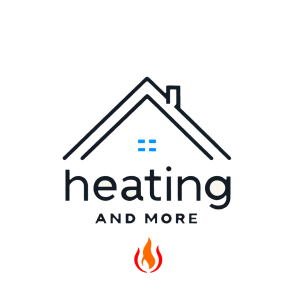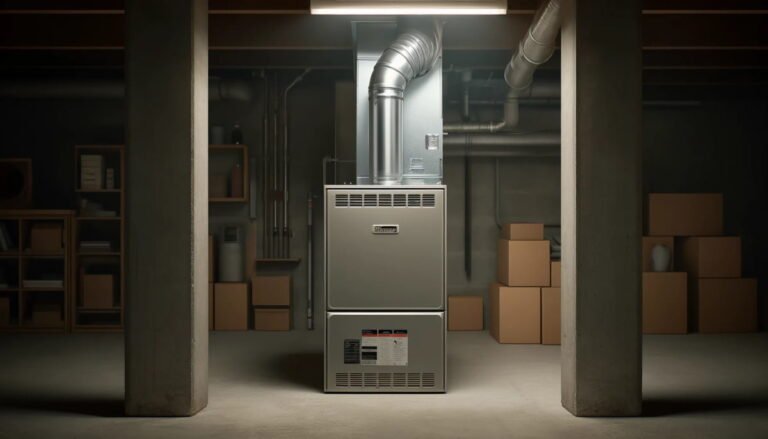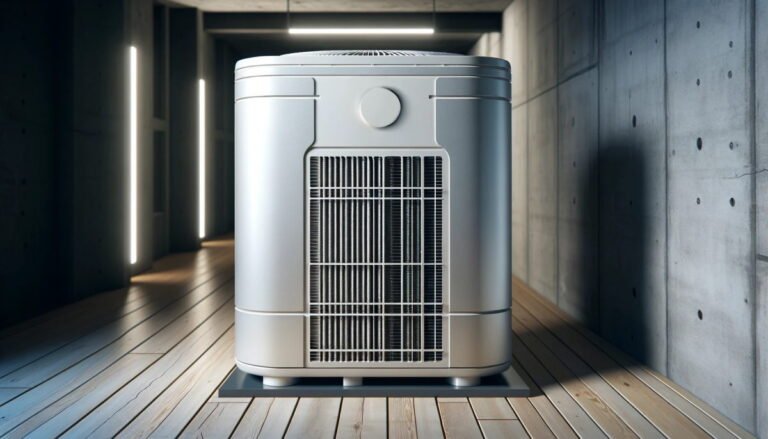Explore the Differences: How Ductless vs. Ducted Heat Pumps Compare
Deciding between ductless vs. ducted heat pumps is as easy as planning a holiday. You know it’s going to cost money, but the tricky part is deciding where to go. It’s the same here: which type of HVAC unit to get, and do you buy a ductless system or choose a ducted heat pump system?
Professional design, planning, and installation are critical factors to ensure your new system matches your family’s specific requirements. HVAC systems are expensive and complicated, so comparing their advantages and disadvantages can be helpful. No matter which system you finally select, always start with a qualified HVAC technician to avoid costly errors.
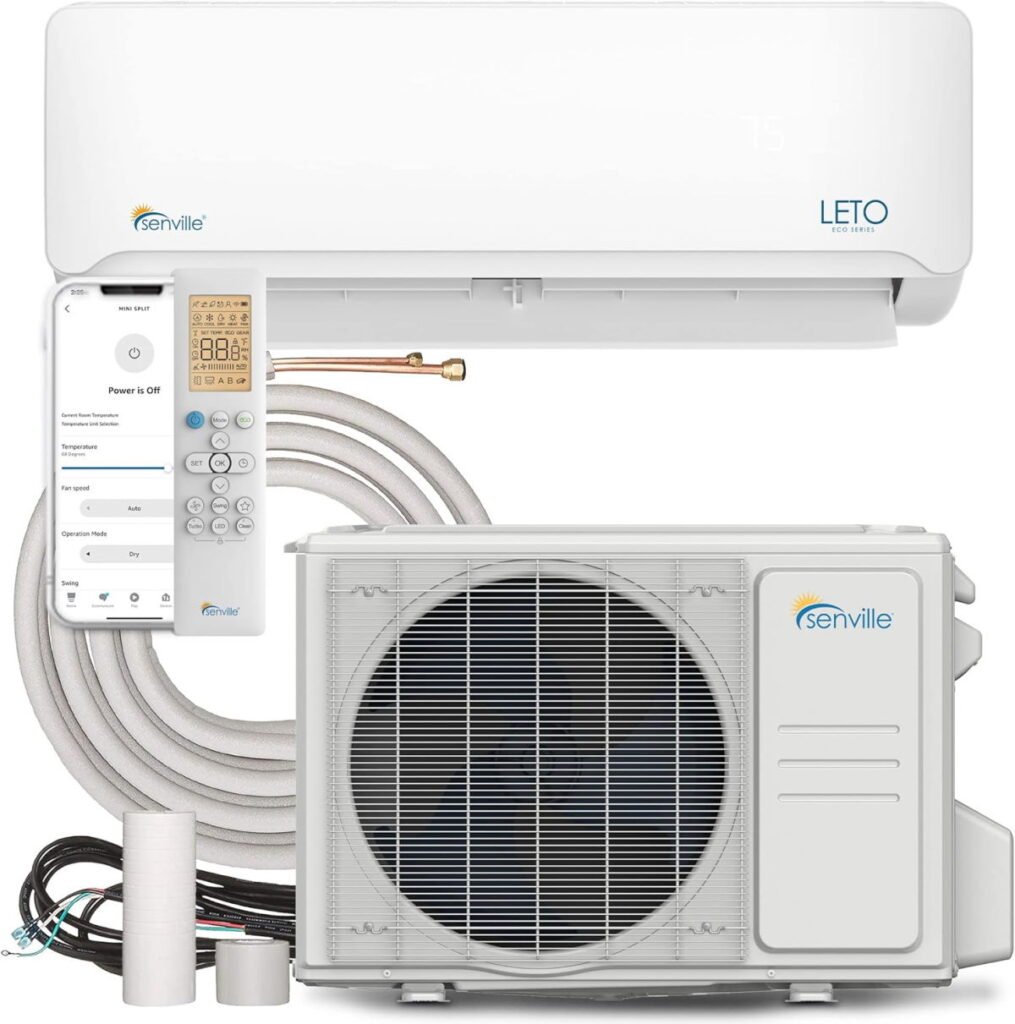
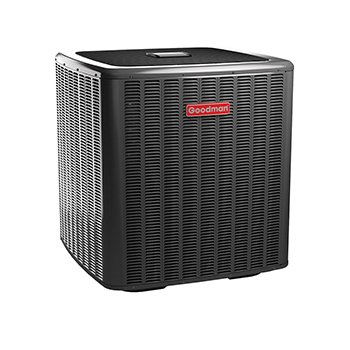
Understanding Ductless Heat Pumps
Ductless heat pump systems, also known as mini-split systems, offer a flexible and efficient alternative to traditional ducted systems. These systems send refrigerant directly to one or multiple small air handlers or blowers installed throughout your home, bypassing the need for ductwork. Each air handler operates independently, allowing for precise temperature control in each room with individual thermostats. This zoning capability not only enhances comfort by letting you customize the climate in different areas of your home but also leads to significant energy savings by not heating or cooling unused spaces.
Installation of ductless systems is less invasive, requiring only a small hole to connect the indoor units to the outdoor compressor, which helps preserve your home’s aesthetics. They generally achieve higher SEER ratings, often up to 25, making them more energy-efficient compared to ducted systems.
In the comparison of ductless vs. ducted heat pumps, we can see that ductless systems may struggle with humidity control, and the visible presence of wall or ceiling-mounted units might not appeal to everyone. Despite these drawbacks, the ease of installation and high efficiency make ductless systems a compelling choice for many homeowners.
Advantages of Ductless Heat Pumps
- Energy Efficiency: Modern air source ductless heat pumps are incredibly efficient, capable of delivering 1.5 to 3 times more heat energy than the electricity they consume. This means that for every unit of electricity used, you get 1.5 to 3 units of heating or cooling energy. This high efficiency translates into significant savings on energy bills, especially in regions with extreme temperature variations.
- Ease of Installation: Installing a ductless system is much simpler and less invasive compared to ducted systems. It requires only a small 3″ hole in the wall to connect the outdoor compressor to the indoor air handlers. This minimal construction work reduces installation time and cost, and it also means less disruption to your home during the installation process.
- High SEER Ratings: Split systems can achieve SEER (Seasonal Energy Efficiency Ratio) ratings as high as 25. Higher SEER ratings indicate greater efficiency, which means these units can provide substantial energy cost savings over time. In contrast, traditional ducted systems typically have SEER ratings ranging from 13 to 16.
- Zone Temperature Control: They offer superior zone temperature control, allowing you to heat or cool specific rooms as needed. Each air handler has its own thermostat, enabling you to customize the climate in individual spaces. This not only enhances comfort but also leads to significant energy and cost savings by avoiding the unnecessary heating or cooling of unoccupied rooms.
- Improved Air Quality: Since ductless systems do not use ducts to circulate air, there is less opportunity for dust and allergens to spread throughout your home. Each air handler unit is equipped with filters that trap dust, pollen, and other airborne particles, leading to improved indoor air quality and a healthier living environment.
- No Duct Energy Loss: These systems eliminate the energy loss associated with ductwork, which can account for 10-30% of the energy used for heating or cooling. This efficiency gain is due to the direct transfer of air without the leaks and thermal losses that often occur in ducted systems.
Disadvantages of Ductless Heat Pumps
- Humidity Control: Ductless systems may struggle in high-humidity areas because they are not equipped with mechanisms to remove excess moisture from the air. This limitation can be a significant drawback in regions with high humidity, as it can lead to discomfort and potential mold growth.
- Aesthetic Concerns: The appearance of wall or ceiling-mounted air handlers might not appeal to everyone. Unlike ducted systems, where components are hidden within the walls, the visible units of a ductless system can affect the interior decor of your home.
- Maintenance: Each air handler in these units requires regular cleaning and maintenance to function effectively. This includes cleaning filters and ensuring that the units are free from dust and debris. Regular maintenance is crucial to maintain efficiency and indoor air quality, but it can be more labor-intensive compared to maintaining a central unit in a ducted system.
Exploring Ducted Heat Pumps
Ducted systems, like popular air-to-air heat pumps use a network of air ducts installed within the walls and ceilings to distribute hot and cold air from a central unit to various rooms. This setup provides a uniform temperature throughout the house and integrates seamlessly into the home’s structure, keeping all components hidden from view.
Ducted systems excel in humidity control and can handle larger volumes of air, making them suitable for extensive homes or areas with high humidity. They also maintain a discreet appearance since air is delivered through vents that blend with the interior decor.
In our detailed comparison of ductless vs. ducted heat pumps, we see that ducted systems come with their own set of challenges. The installation and maintenance of ductwork can be more complex and costly. Ducts need to be well-insulated and regularly checked for leaks and damage, as compromised ductwork can lead to significant energy loss. Despite these challenges, ducted systems are a solid choice for homeowners looking for comprehensive climate control and a streamlined aesthetic, especially in larger homes or those with existing ductwork.
Advantages of Ducted Heat Pumps
- Humidity Control: Ducted systems are highly efficient at controlling humidity and moisture levels within your home, which is essential in climates with high humidity. These systems can include dehumidifiers that work seamlessly with the heating and cooling process to maintain a comfortable indoor environment, preventing issues like mold growth and dampness.
- Airflow: They are designed to deliver more consistent airflow throughout your home. This helps to maintain a uniform temperature in all rooms and prevents areas of stagnant air, ensuring that every part of your home feels fresh and well-ventilated.
- Aesthetics: With a ducted heat pump, all the components are hidden within the walls and ceilings, and air is delivered through unobtrusive vents. This means that there are no visible units to detract from the interior decor of your home, providing a cleaner and more aesthetically pleasing appearance.
- Lower Maintenance: Ducted systems generally have fewer individual components to maintain compared to ductless systems. The central air handler and outdoor unit require regular maintenance, but this is often less labor-intensive than cleaning multiple air handlers in a ductless system.
- Existing Ductwork: If your home already has a duct system in place, you can often link a new heat pump to the existing ductwork. This can significantly reduce installation costs and time, making it a more convenient option for homes with pre-existing ducts.
- Quick Installation: If the existing ducts are in good condition, the installation of a ducted heat pump system can be relatively quick. This is especially true if the ductwork is already well-designed and properly insulated, allowing for a smooth integration of the new system.
Disadvantages of Ducted Heat Pumps
- Energy Loss: One of the primary drawbacks of ducted systems is the potential for energy loss through the ducts. As ducts age, they can develop leaks or lose insulation, resulting in 10% to 30% of the energy (link opens in PDF)used to heat or cool air being lost. This inefficiency can lead to higher energy bills and reduced system performance.
- Maintenance: Ductwork requires regular checks and proper insulation to maintain efficiency. Ducts that pass through attics, basements, or crawl spaces are particularly susceptible to damage and should be inspected frequently for leaks, insulation degradation, and blockages to ensure optimal performance.
- Potential Costs: If your existing ductwork is unsuitable for a new system, replacement or significant repairs can add substantial costs to your project. It’s crucial to have the ductwork thoroughly inspected before installing a new system to avoid unexpected expenses and ensure compatibility.
- Lower SEER Ratings: Ducted systems typically have lower SEER (Seasonal Energy Efficiency Ratio) ratings, generally ranging from 13 to 16. This means they may be less efficient and more expensive to operate compared to ductless systems, which can achieve SEER ratings up to 25.
- Zone Control: Achieving zone temperature control in a ducted system can be complex and costly. It requires the installation of additional thermostats and automatic dampers within the ductwork to regulate airflow to specific areas. This added complexity can increase installation costs and maintenance requirements.
Conclusion
The final decision is yours, but now you have information on two possible choices – a ducted heat pump system or a ductless heat pump system. When you call in your HVAC professional, you’ll be able to discuss everything in detail, comparing the specifics of ductless vs. ducted heat pumps.
As you have read, both systems have benefits and drawbacks. The final choice will hinge on your specific requirements, the size of your home, and what your expectations are of the new system. The budget will also play a significant factor in your decision, of course.
Don’t forget grants, rebates, and assistance that could be available in your area. Check out local, state, and federal sources of incentives to install energy-efficient systems in your home.
Remember, if you already have a duct system in your home, it may be the best way to go forward. Always have the ducting checked out by a professional HVAC technician before you place the final order, and expect a longer installation process if you need to replace it.
Before you make your final choice, check the EnergyGuide label on the equipment you are considering. It will give you full details of the heat pump’s Seasonal Energy Efficiency Ratio (SEER) rating.
The higher the SEER rating, the more expensive the unit will be, but the savings in energy costs will return the higher outlay many times over through the heat pump’s lifetime.
In warm climates, SEER is more important than HSPF, but in colder climates, always aim for the highest HSPF level you can afford.
More About Heat Pumps

Heat Pump Not Cooling? Here’s What You Need to Know
Heat pumps are essential not only in the winter for heating our homes but also in the summer to cool…
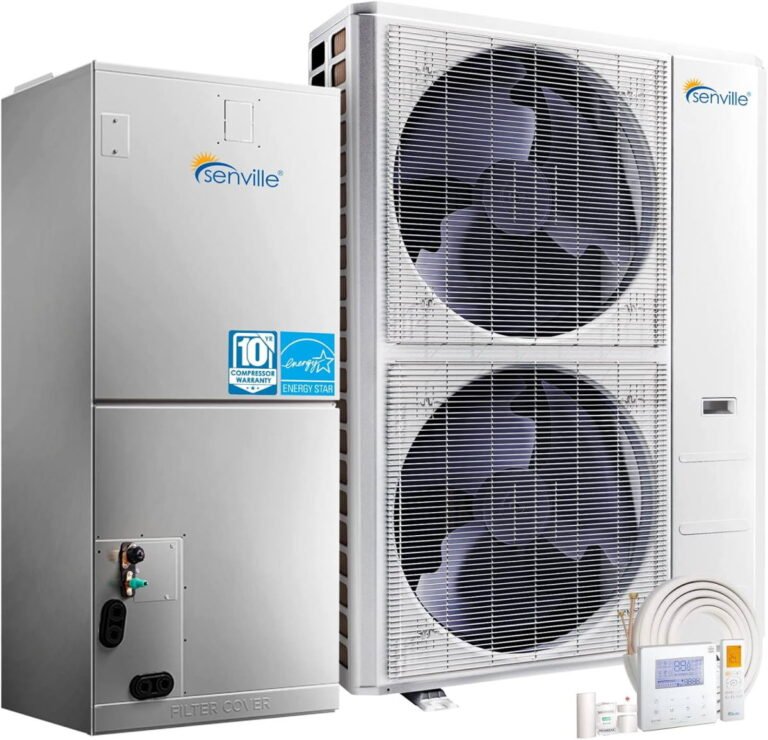
Compare Ductless Mini-Split Heat Pumps vs. Window Heat Pumps: Which Is Right for You?
In this article, we are going to look at ductless mini-split heat pumps vs. window heat pumps, examine how each…
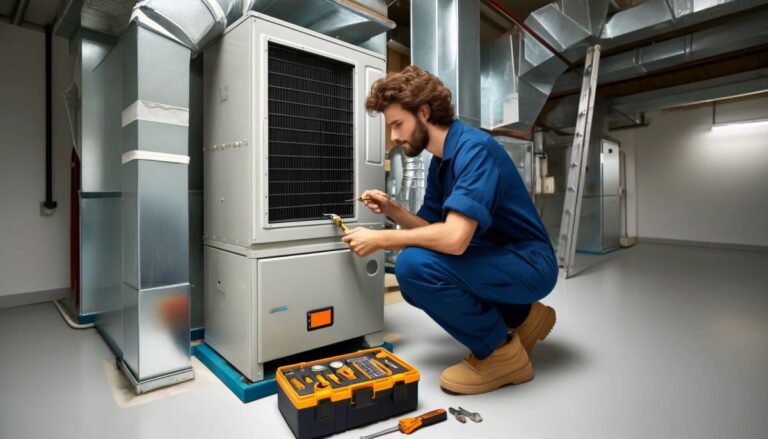
How to Improve Performance of Your Heat Pump Easily
Improving the performance of your heat pump is essential for maximizing its efficiency, reducing energy costs, and ensuring consistent home…
